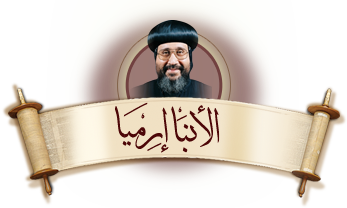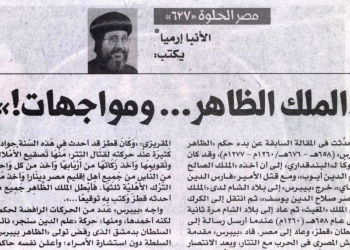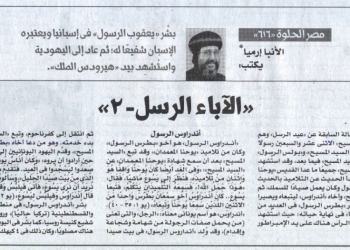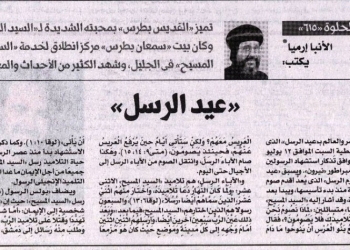In the previous article, we spoke of Emperor Tiberius Constantine’s rule of Byzantium and his nominating his son-in-law Maurice heir apparent, having told him to be good and just. We tackled his war against the Persians as well as the Egyptian rebellion that broke out during the first years of his tenure.
Maurice’s Wars against the Slavs and the Avars
Having overcome the Persians and helped their king to restore his throne, Maurice directed his attention toward dissolving the conflicts that broke out in the Balkans due to the Slavs’ raiding the Byzantine provinces there. They settled in these provinces as of 580 A.D.
The Avars invaded Smyrnium in 582. They used its fortress to attack others that spread on the Danube. These were not that well fortified. They besieged Salonika in 586. In 591, Maurice sent several crusades to overcome the Slavs and Avars. He emerged victorious from 592-598, after which he made a treaty with the Avars. Also, from 599-602, Byzantium restored its control on the Danube.
Westwards, he divided the regions ruled by Byzantium in Italy and Africa into provinces. He appointed military rulers on it, for he realized that a civil leadership would fail to defend the provinces, which is considered a stark separation between civil and military leaderships at that time. This gave a halt to the Lombardians in Italy.
In 597, Maurice wrote his will in which he expressed how the Empire should be ruled. He appointed his eldest son, Theodosius ruler of the East. Constantinople would be his premises. His youngest was to rule the West. Yet, some historians maintain that he wanted his youngest son to rule the West from Alexandria, Carthage, and Antioch: for he wanted to unify the empire in an attempt to imitate Diocletian. Yet, he died before achieving these goals.
Some historians assert that Maurice changed the Roman Empire from a devastated entity to an organized one just like that which used to exist in the Middle Ages. Yet, the crusades directed against the Persians, Slavs, Avars and Lombardians wasted the Empire’s resources, thus, making it impose huge taxes on the people. In effect, soldiers got upset. That Maurice ordered his armies to spend the winter by the Danube to protect it made the soldiers rebel and marched to Constantinople under Phocas. Upon reaching Constantinople, the people joined them and overthrew Maurice. He was replaced by Phocas who had Maurice and his six children executed. This was a disaster, having led to a fierce war against the Persians. It left the Empire no chance to confront any invasion.
Despite the fact that Maurice was a Melchite, he was tolerant with the Orthodox.
Phocas (602-610 A.D.)
Little is known of Phocas’ early life. Yet, in 600, he was a soldier in Maurice’s crusades in the Balkans. Also, he was a member of the delegation which the army sent to Constantinople to file complaints to the government. Historians maintain that among the incidents that led to overthrowing Maurice was that during one of his wars against the Avars in 598, the Romans were defeated. Many of them were imprisoned. The Avars demanded one dinar for each soldier, but Maurice refused. So, they demanded half a dinar instead, which he also refused. Thus, all the prisoners were beheaded. This scared the soldiers. By 602, Maurice ordered the army to stay to the north of the Danube, which led to a rebellion that ended in Maurice’s execution and Phocas’ becoming Emperor.
At first, Phocas was warmly welcomed: for he reduced the heavy taxes imposed by Maurice. He became quite popular. Yet, his tenure witnessed the downfall of the conventional borders of Byzantium: for the army’s leaving the Danube in 605 led to new attacks and the annihilation of the Byzantine existence in the Balkans.
Eastwards, Khosrow prepared to wage war against the Romans, making the execution of his friend Maurice a pretext to violate the peace treaty and declare war against the Romans to avenge his friend.
At that time, Khosrow received a person who claimed to be Theodosius, Maurice’s son and his partner. So, he arranged a coronation gala for him. Also, he demanded that the Roman Empire accept him, using the challenges that were facing the army and offering commander Narcissus, the rebel, his help.
In 608, the tetrarch of Africa and his son, Heraclius, rebelled against Phocas. In effect, Phocas sentenced many people to death, among whom was ex-Empress Constantia and her three daughters. This made Heraclius send his brother Nectus to seize Egypt from the Romans. He sent another son to Cecily and Cyprus.
The Persians used these conflicts and prepared great armies which restored several provinces, including Armenia and the Levant, from the Romans. Thus, the two kingdoms became enemies. Phocas prepared a great army to fight Khosrow. Yet, due to the soldiers’ hatred for the Emperor, they fought reluctantly. Hence, they were overcome by the Persians. Khosrow marched towards Constantinople and besieged it, which made the city’s elites seek Heraclius’ help. No sooner had their message reached Heraclius than he sent armies and ships led by his son. When these arrived at Constantinople, the elites enticed the people against Phocas. Seditions spread throughout the country, and the people demanded the dethronement of Phocas to be replaced by Heraclius.
Heraclius tried to enter the city while Phocas’ palace was besieged by the elites. These were eventually able to arrest him and bring him to Heraclius. Some historians maintain that Phocas stood on board a ship before Heraclius, while the people stood on the shore demanding his death. So, Heraclius handed him over to the people who killed him along with his brothers. Then, Heraclius became Emperor.
On the other hand, some historians assert that Heraclius entered the city without the least resistance and that Phocas was brought to him. So, he asked him, “Is this how you rule the country, despicable man?” “Would you rule in a better way?” answered Phocas. This made Heraclius angry, and he ordered the beheading of Phocas and mutilation of his body. He was carried dead through the town, then burned. This is how Heraclius succeeded Phocas in 610.
It is said that during Phocas’ tenure, the Persian king sent his troops to Egypt and the Levant. These ruined churches, burning two in Jerusalem. The soldiers took a piece of the holy Cross and imprisoned the patriarch of Jerusalem. They also raided and ruined whatever they found in the Levant. Reaching Egypt, they filled it with corruption. The tribulation was horrific. So much so that a historian maintains, “When they came to Egypt, the Jews helped them kill her Christians and ruin their churches. So, they killed people, raided places, and perpetrated all sorts of atrocities.” Indeed, stories never in Beautiful Egypt.
General Bishop
Head of the Coptic Orthodox Cultural Center


 العربية
العربية











